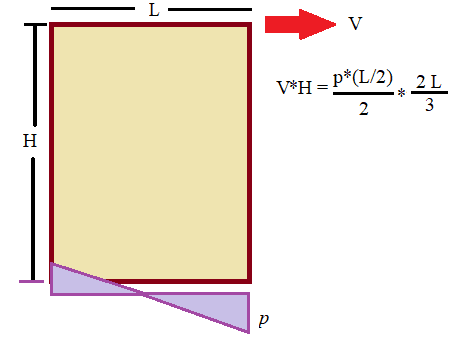Hi everyone
I have been tasked to provide the value of a line load under a timber wall subjected to wind load. The wall will sit on a beam.
I know how to calculate pressure under shear wall/retaining wall, but I have no clue how to approach the problem. All they need is the line load from wind under the wall.
Thank you!!
I have been tasked to provide the value of a line load under a timber wall subjected to wind load. The wall will sit on a beam.
I know how to calculate pressure under shear wall/retaining wall, but I have no clue how to approach the problem. All they need is the line load from wind under the wall.
Thank you!!

